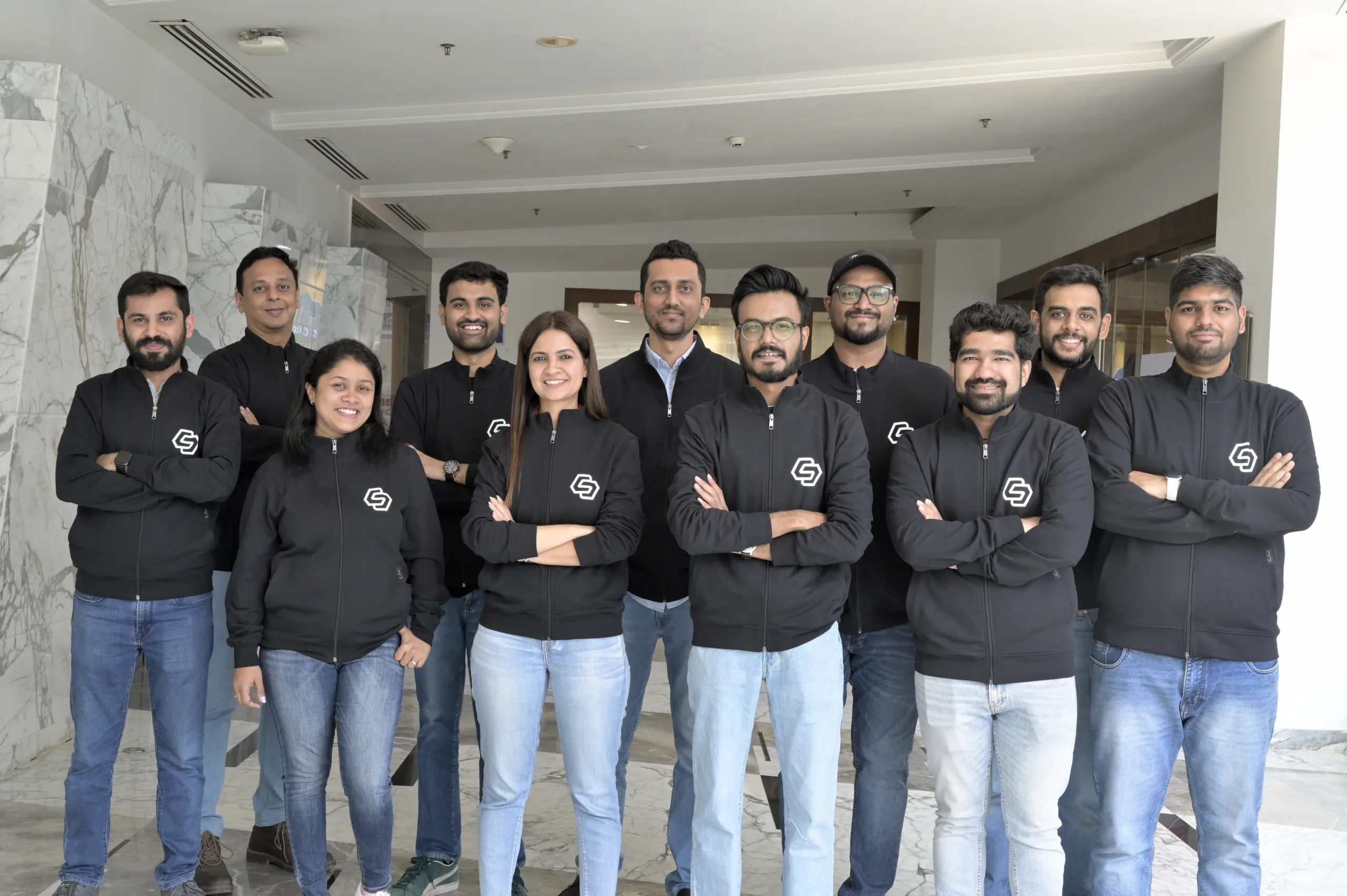// Tagged with Advantage India AI-first Entrepreneurs
For a decade as Co-founder and CTO of LogiNext, one of India’s fastest-growing logistics SaaS companies, Manisha Raisinghani watched the same movie play on repeat.
A sales deal would heat up. The account executive would need technical details. The solutions engineer would drop everything to answer questions about GDPR compliance or API rate limits or data residency.
Then next week, a different AE would ask the exact same questions about a different deal.
In her 15 years of experience, she saw that product and engineering teams everywhere spent 20-30% of their time playing human search engine for the sales org.
The information existed – buried in Drive folders, scattered across Confluence pages, hiding in old email threads.
Finding it required forensic skills nobody had time to develop.
After exiting LogiNext in 2020, she spent time advising companies, including Polygon Labs. The problem got worse everywhere she looked.
A midsize organization runs 100+ SaaS apps. A typical seller touches 10-12 of them daily. Salesforce holds deal data. Gong has call transcripts. Confluence stores product docs. Slack contains the real decisions.
Nobody can find anything.
Any way you looked at it, the math was brutal. Sales teams only spend 28% of their time actually selling. Pre-sales teams drown under 5:1 loads from account executives. 67% of sellers expect to miss quota. 84% already did.
Solutions engineers exist because enterprise software has become too complex and technical.
Companies kept buying specialized tools – one for email, one for calls, one for content, one for data. Each vendor optimized their corner. Nobody optimized for the whole. The gaps between tools created a new job category: people who bridge the gaps.
Manisha started calling this “unified search” in early 2022. She interviewed about 250 sales and pre-sales leaders. Initial analysis suggested productivity might improve 15-20% if you could search across all the tools at once.
That didn’t justify starting a company.
Then ChatGPT launched in November. By February 2023, she saw it differently.
The technology to build unified search had existed for years – retrieval augmented generation, large language models, semantic search.
What didn’t exist was buyer willingness to let AI-generated content talk to their customers.
ChatGPT changed that overnight.
Over 70% of professionals now trust the accuracy of AI-powered solutions. When your competitors are experimenting with AI and you’re not, you’re suddenly the one taking the risk. Fear of missing out drives enterprise adoption faster than ROI calculations ever did.
Manisha realized the lift wouldn’t be 15-20%. If you could combine knowledge discovery with AI generation that doesn’t hallucinate itself into legal liability, you could hit 70-80%.
“After speaking to more than 200 leaders, it dawned on me that it’s completely unreasonable to expect sales and presales professionals to memorize all the ins and outs of the product in order to be able to respond to clients with complex technical details,” she said.
She decided to build SiftHub in July 2023.
Not for all teams and all industries – just for revenue teams who spend most of their day hunting for information.
In April 2024, SiftHub raised $5.5 million in seed funding led by Matrix Partners India and Blume Ventures, with participation from Neon Fund. Harshil Mathur and Shashank Kumar (founders of Razorpay), Arvind Parthiban (founder of SuperOps), Manish Jindal (ex-GM at Cloudflare), Andrew Johnston (Head of Sales at Superhuman), and several other operators joined as angels.
The Second-timer Advantage

If you look at SiftHub from the prism of startup history, you could argue that it is solving a problem that we created ourselves.
For 15 years, SaaS startups unbundled enterprise software into specialized point solutions. Each vendor delivered perfectly optimized tools for micro-problems. Collectively they created a macro-catastrophe where nobody can find anything.
They struggle to fix it because their revenue depends on the fragmentation continuing.
Salesforce doesn’t want to eliminate the gaps that create demand for Gong, Highspot, and Confluence. Each vendor optimizes their silo. You can’t see the forest when you planted all the trees.
Manisha watched this happen from outside. She saw companies buy tool after tool, each creating new gaps that required more tools to bridge. “Over the last 2 decades, we’ve created this problem where for every small thing there’s a different application using a different data structure and different cloud, leading to hopelessly scattered knowledge. It’s a complex problem to solve.”
At LogiNext, Manisha built one of India’s pioneering B2B SaaS logistics automation platforms with global reach. That experience taught her how to build leverage without bloat. While a previous generation of startups celebrated headcount growth, AI-native companies are learning to scale efficiently. At SiftHub, her product managers spend more time with customers than with engineers. The team dogfoods SiftHub daily, using AI across sales, design, content, QA, and engineering. Small teams move faster.
Second-time founders have another advantage. Manisha already scaled a company. She knows what acquisition timelines look like. She knows the difference between building for ten years and building for an exit window. She knows which corners you can cut and which ones kill you.
“When you’re going to give at least 10 years of your life to something, you want to make sure that you are going to be excited and you truly believe in it for the next decade,” she said. Her technical decisions reveal what she actually expects: open-source LLM deployment to avoid vendor lock-in, re-ranking algorithms that evaluate authority and recency, strict source-level permissions instead of model-level access controls.
How SiftHub Actually Works
SiftHub had to solve three problems simultaneously.
First: live where work happens. Most AI tools give you another interface to learn, another login to remember, another place to check. SiftHub embedded itself inside Salesforce, Slack, Google Slides, Outlook, Teams. Sellers don’t learn a new tool. They don’t study prompt engineering. The intelligence appears where they already work.
An account executive needs to build a deck for tomorrow’s executive briefing. Old method: download the template, hunt for updated slides across five folders, manually swap logos and case studies, hope everything renders correctly. SiftHub method: the agent opens inside Slides, pulls the current template, inserts updated slides based on the deal context from Salesforce, drops in relevant case studies, and hands you a customer-ready deck. You edit in context instead of building from scratch.
This solves the adoption problem that murders most enterprise software. The closer the tool is to existing workflow, the less friction, the faster people actually use it. It also solves the blank slate problem – instead of staring at an empty prompt, the agent proactively assembles context from CRM, enablement, and call notes.
Second: wrong answers destroy trust faster than no answers help. When reps paste sensitive customer data into ungoverned AI tools like ChatGPT, knowledge leaks outside company boundaries. When AI hallucinates compliance commitments, legal problems follow.
“We would rather not give an answer than give the wrong answer,” Manisha said.
SiftHub’s AI might provide 5% fewer responses, but achieves over 99% accuracy on validated content. Over 75% of outputs get used as-is. That precision comes from combining retrieval augmented generation with cross-encoders that verify accuracy before showing results. The search algorithms evaluate relevancy, recency, frequency, and authority – not just keyword matching.
Source-level permissions matter. If a rep doesn’t have access to a file in Google Drive, they never see an answer sourced from it. Customer data never leaves the company. Nothing gets used to train external models.
“SiftHub is uniquely positioned to deliver secure, private, access-controlled answers that trace back to the original source,” she explained. Most AI wrappers optimize for impressive demos. SiftHub optimizes for not creating legal liability.
Third: context shapes everything. The way you answer a question for a CRO at a global bank is different from how you respond to a product manager at a startup, or a procurement team in Singapore versus a buyer in Ohio.
An account executive gets asked about GDPR compliance on a live call. Old world: stall, message the SE on Slack, tab through five different systems looking for the right security doc, paste something generic and hope it’s current. SiftHub: the agent pulls the GDPR clause from the security policy, combines it with deal-specific context from Salesforce, attaches the relevant slide from the approved deck, and delivers everything inside the AE’s workflow in seconds.
The system knows this is a financial services deal, the buyer is European, the conversation just covered data residency, and there’s a competitive eval happening against two other vendors. That context shapes which information surfaces and how it gets framed.
Two months after launching with early adopters in 2024, SiftHub reported customer productivity improvements up to 80%.
Companies using the platform report time-to-response dropping from 3 weeks to under 7 days. Pre-sales teams handle 1.5-2x more deals per person without adding headcount. Deal velocity up 30-40%. Win rates up 15-20%.
SiftHub early success is also a strong sign that every role that exists primarily to bridge gaps between fragmented systems is on borrowed time. If your job is translating between tools, finding information scattered across platforms, or manually assembling context that software should provide automatically, you’re a human band-aid on broken architecture.
Why Incumbents Can’t Just Fix This
Salesforce could theoretically build this. So could HubSpot or Microsoft. They have more data, broader integrations, established relationships, and market caps that make $5.5 million look like lunch money.
Two things stop them.
Their installed base restricts what they can change. Adding AI features to existing products is different from rebuilding core architecture around autonomous workflows. They can bolt on search improvements or smart suggestions, but they can’t re-architect the foundation without breaking everything their current customers depend on.
Their revenue model depends on fragmentation continuing. Salesforce makes money when customers also buy separate tools for calls, content, enablement, and analytics. If Salesforce truly unified everything, they’d eliminate the ecosystem that feeds them integration fees and expansion revenue.
As Pranay Desai, Managing Director at Matrix Partners India, put it: “Buyers have become smarter and engage sales later in the buying journey, with more advanced questions. Sales and presales teams lack the necessary tooling to handle this new selling environment.”
Plenty of AI-first startups are building sales tools right now. Most are thin wrappers around ChatGPT or Claude. They demo impressively but lack enterprise-grade integrations, permission systems, and trust infrastructure. Adoption stalls after pilots because the outputs can’t be trusted in production.
SiftHub sits in a specific position. Deep enough to matter. Fast enough to capture the window before platforms consolidate. Defensible enough to command acquisition premium when the moment arrives.
Sanjay Nath, Partner at Blume Ventures, said it directly: “SiftHub is Manisha’s second venture in the SaaS space. Armed with over a decade of entrepreneurial cross-border experience and an impressive track record, Manisha and her team are building a game-changing AI platform to transform the entire sales and presales process.”
What Happens Over The Next Three Years
“The technology shift is already here – AI can do the heavy lifting,” Manisha said. “But the human behavior shift will take 2-3 years.”
By 2027, sales organizations will measure productivity by customer interaction time instead of CRM hours or tool counts. The 70-30 ratio flips. Teams bring in more revenue with the same headcount.
By 2028, “AE vs. SE” will be an outdated debate. The future is one unified revenue role powered by AI and shared context.
Whether companies reorganize around the efficiency gains or pocket the savings and maintain headcount determines who wins. Most will pocket the savings. The ones that reorganize will dominate their markets.
Seller bots will negotiate details with buyer bots – evaluation criteria, pricing tables, security forms, legal clauses. Humans step in where it actually matters: building trust, navigating nuance, driving conviction.
Sellers who learn to work with AI will close more deals with less support. Companies that resist will watch competitors scale revenue without scaling costs.
What Founders Should Take From This
Pick problems that get worse with scale. Enterprise software fragmentation accelerates as companies grow. More tools, more information, more places for knowledge to hide. The problem SiftHub solves compounds as organizations get bigger. Customer value increases with deployment size.
The India advantage shows up in cost structure too. SiftHub maintains US headquarters with an R&D office in Mumbai. Engineering talent costs 60% less in India, but sales and marketing still happen where enterprise budgets live. That’s not a weakness – it’s strategic arbitrage that other founders can’t replicate.
Second-time founders see patterns first-time founders miss. Manisha knew the problem definition before writing code. When investors evaluated SiftHub, they were not betting on an idea. They were betting on someone who already scaled a global SaaS company once and knew how to do it again.
Market timing beats perfect technology. The right idea at the wrong time is just the wrong idea. The technology to build SiftHub existed before ChatGPT. Buyers weren’t ready to trust AI with their customers. Waiting for the moment when behavior shifts, then moving fast – that separates successful founders from technically correct ones.
Manisha identified the problem correctly. She waited for the window to open. She moved while it mattered. Whether SiftHub stays independent or gets acquired in the next three years doesn’t change those facts.
The only mistake would have been building five years ago when enterprises weren’t ready, or building five years from now when platforms will have already absorbed the solution.
She got the timing right. Everything else is execution.
// Tagged with Advantage India AI-first Entrepreneurs









